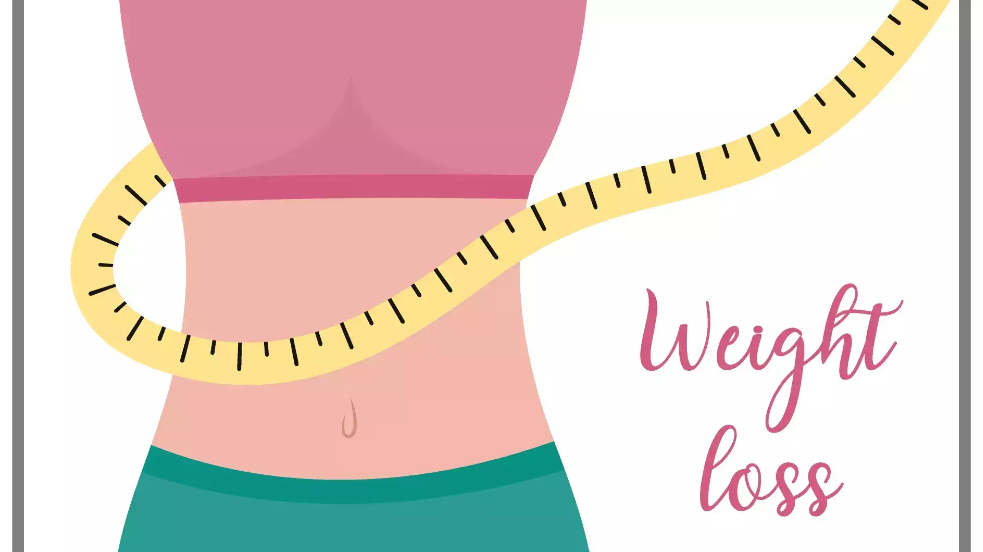Five suggestions for effective weight loss
The secret to a healthy lifestyle and improved weight control is a nutritious food and balanced way of living. Keeping a diet and weight journal, getting social support, and exercising frequently are some weight loss strategies.
The Centers for Disease Control and Prevention estimate that 93.3 million adult Americans (Trusted Source) were obese in 2015–2016. This figure represents 39.8% of the total population.
Being overweight raises the risk of heart disease, hypertension, and type 2 diabetes, among other major health issues.
Despite any benefits that its supporters may claim, crash diets are not a long-term answer. Making small, long-lasting, and advantageous lifestyle adjustments is crucial for long-term weight loss that is safe.
How much should I weigh for my height and age?
This article offers Five weight control suggestions.
Ten suggestions for effective weight loss
1. Eat a wide variety of vibrant, nutrient-dense meals
The basis of a person’s diet should consist of nutritious meals and snacks. Making sure that each meal has 50% fruit and vegetables, 25% whole grains, and 25% protein is an easy method to build a meal plan. 25–30 grams of fiber should be consumed overall.Every day, Trusted Source (g).
Reduce your consumption of saturated fats, which are strongly associated with the risk of coronary heart disease, and get rid of trans fats from your diet.
As an alternative, people might eat unsaturated fats like polyunsaturated fatty acids (PUFA) and monounsaturated fatty acids (MUFA).
The foods listed below are nutritious and frequently high in nutrients:
- fresh fruits and vegetables
- fish
- legumes
- nuts
- seeds
- whole grains, such as brown rice and oatmeal
Items you shouldn’t eat include:
- foods with added oils, butter, and sugar
- fatty red or processed meats
- baked goods
- bagels
- white bread
- processed foods
Sometimes cutting out particular items from the diet can result in a person lacking in important vitamins and minerals. A person pursuing a weight loss program can receive advice from a nutritionist, dietitian, or other healthcare professional on how to ensure they are getting adequate nutrients.
2. Maintain a food and weight log
A key component of weight loss success is self-monitoring. To track every food item they eat each day, people can use a specialized website, mobile app, or paper journal. Another way they might track their development is by keeping a weekly weight log.
A person is far more likely to maintain a weight loss program if they can recognize physical changes and track their progress in tiny increments.
Using a BMI calculator, people can also monitor their body mass index (BMI).
3. Take part in regular exercise and physical activity
Exercise on a regular basis is essential for both mental and physical health. For weight loss to be successful, increasing physical activity frequency in a deliberate and controlled manner is frequently essential.
It’s best to engage in one hour of moderate-intensity exercise every day, like brisk walking. The Mayo Clinic advises that if an hour a day is not feasible, one should try to get at least 150 minutes per week.
Individuals who do not typically engage in physical activity should progressively increase both the quantity and intensity of their exercise. The best way to guarantee that regular exercise becomes a part of their routine is to take this strategy.
People may benefit psychologically by tracking their physical activity in the same way that maintaining a food journal can aid in weight loss. After logging food consumption and exercise, a person can use one of the many free mobile applications available to track their calorie balance.
If someone is new to exercising and finds the idea of a full workout frightening, they might start by practicing the following exercises to get more exercise:
- taking the stairs
- raking leaves
- walking a dog
- gardening
- dancing
- playing outdoor games
- parking farther away from a building entrance
It is unlikely that those with a low risk of coronary heart disease will need to be evaluated medically before beginning an exercise program.
However, for some individuals, particularly those who have diabetes, a previous medical evaluation may be advised. Anyone with questions concerning appropriate exercise dosages ought to consult a medical expert.
4. Get rid of liquid calories
Drinking tea, juice, soda with added sugar, or alcohol can result in the consumption of hundreds of calories every day. These are referred to as “empty calories” since they add extra energy content without improving nutrition.
A person should try to limit their intake to water, unsweetened tea, and coffee, unless they are using smoothies as a meal substitute. A squeeze of fresh orange or lemon can add taste to water.
Do not confuse thirst with hunger. A glass of water can frequently quench one’s hunger between meals that are scheduled.
5. Track quantities and measure servings
Gaining weight can occur by eating too much of any meal, including veggies that are low in calories.
As a result, consumers ought to refrain from consuming food straight out of the package or gauging the portion size. Serving size guidelines and measuring cups work well. Making assumptions increases the risk of overeating and consuming more food than is necessary.
When dining out, the size comparisons below can be helpful in keeping an eye on how much food is consumed:
- quarter of a cup is a golf ball
- one-half of a cup is a tennis ball
- 1 cup is a baseball
- 1 ounce (oz) of nuts is a loose handful
- 1 teaspoon is 1 playing die
- 1 tablespoon is a thumb tip
- 3 oz of meat is a deck of cards
- 1 slice is a DVD
These measurements are not precise, but when the right instruments are not available, they can assist someone in controlling how much food they eat.

